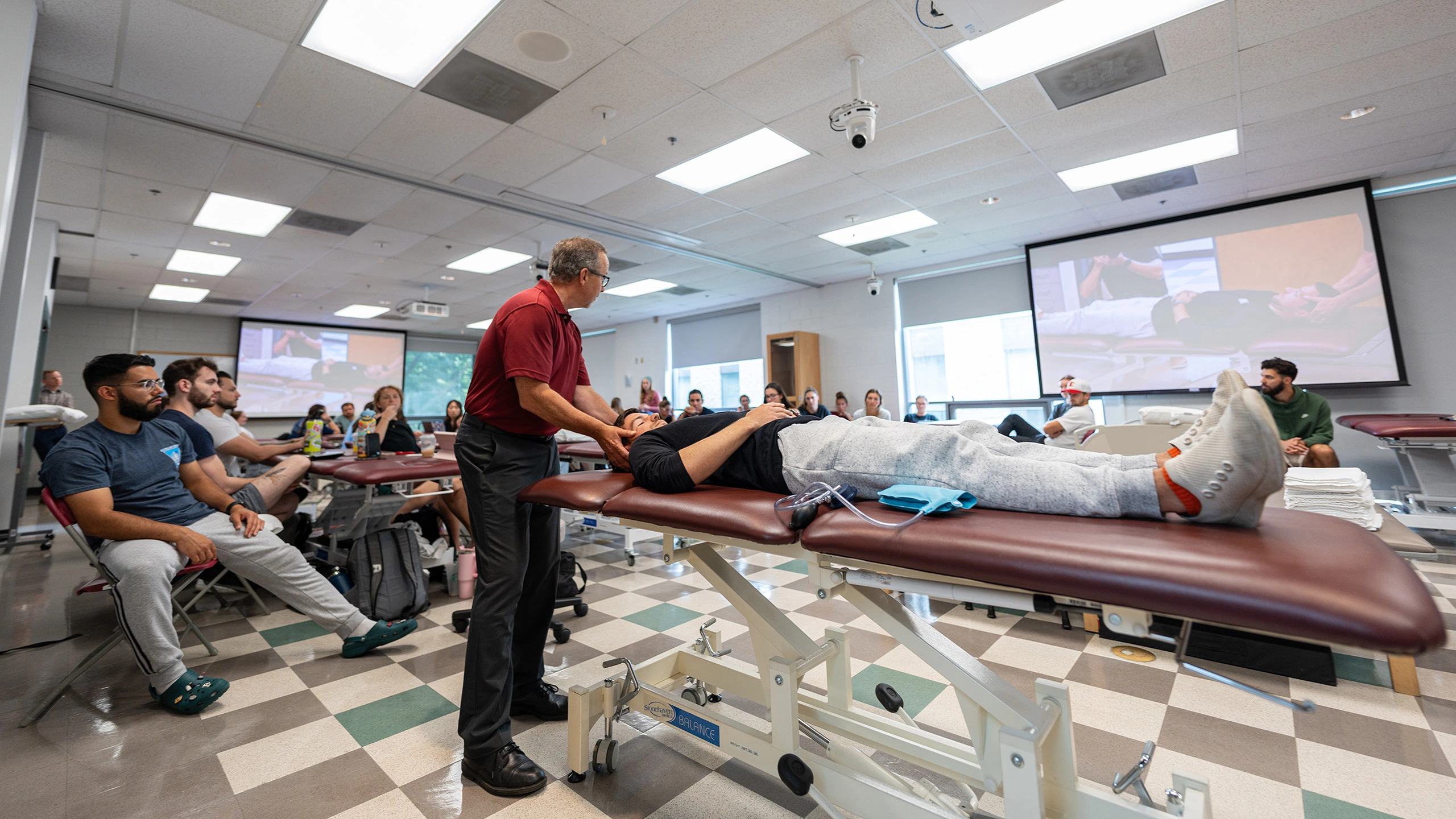
Classroom and Lab Spaces
Health Sciences Center
The Health Sciences Center is the primary location for the residential students. This building consists of modern teaching labs (pictured above), seminar rooms, student lounge, research labs, and faculty/staff offices.
Royal Ave
Royal Ave is the primary location for the hybrid students. The Royal Ave Center consists of teaching labs, meditation room, student lounges, Anatomy Resource Center, lecture spaces and multiple examination rooms used for practical exams and clinical simulation experiences.
Anatomy Resource Center
The Anatomy Resource Center provides our students with the opportunity to learn anatomy through interaction and dissection of human cadavers and joint prosections.
Experiential Learning
Pro Bono Physical Therapy Clinic
Arcadia University’s student-run Pro Bono Physical Therapy Clinic offers no-cost physical therapy services to underinsured individuals. Our goal is to provide care that alleviates physical and psychological burdens, promote public health, and support you.
Dan Aaron Stay Fit Clinic
The Dan Aaron Stay Fit Clinic houses supervised exercise sessions for people with Parkinson’s disease and Multiple Sclerosis. It has state-of-the art exercise equipment, including stationary bicycles (upright and reclining), elliptical, arm ergometer, leg press devices.
Research Spaces
Shoulder Lab
The Shoulder Research Center is committed to understanding the underlying mechanisms of shoulder pain and developing optimal treatment approaches to manage it. The center uses various state-of-the-art measurement tools including muscle activation testing, surface and fine-wire electromyography (EMG), inertial measurement devices, quantitative pain analysis, Electromyography (EMG), 3-D Motion Capture, Force Transducers.
Neuromuscular Performance Lab
The Neuromuscular Performance Lab is a collaboration of multiple faculty in the Physical Therapy Department interested in understanding mechanisms related to altered movement in various patient populations and improving rehabilitation outcomes. This lab uses cutting edge technology including isokinetic dynamometry to examine muscle performance, electromyography to examine muscle activity, transcranial magnetic stimulation (TMS) to examine corticospinal excitability, and function near-infrared spectroscopy (fNIRS) to examine cortical activation. Faculty who specialize in sports rehabilitation and neurological rehabilitation utilize this lab to study a variety of patients including athletes after anterior cruciate ligament (ACL) injury and patients following stroke.
Motor Performance and Gait Lab
The Motor Performance and Gait Lab, which is also housed in the Health Science Center, is a fully accessible 1650 ft2 space that includes force plates, motion capture system, exercise capacity testing devices, ultrasound machines and gait mat. It also includes several computer workstations for data reduction and analysis and software including ImageJ, custom-designed data collection software, statistical analysis (SPSS) and typical word processing and related software.


